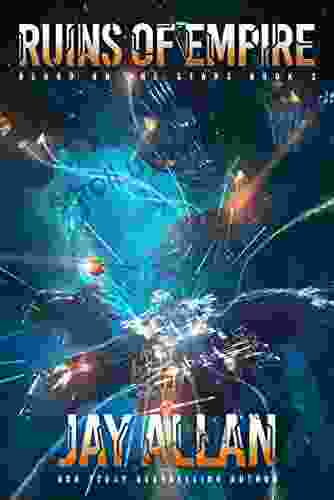Why Kitty Is Afraid Of Poo: Unraveling the Feline Paradox

: The Curious Case of Kitty and Her Fear
In the quaint and enigmatic world of cats, there exists a peculiar paradox: their innate cleanliness and aversion to soiling their surroundings. However, for some felines, this natural instinct is overshadowed by an irrational fear of their own excrement, a condition known as "coprophagiaphobia." This article delves into the perplexing world of "Why Kitty Is Afraid Of Poo," exploring the reasons behind this unusual feline behavior and unraveling the mystery that surrounds it.
Chapter 1: The Root of Kitty's Fear
1.1 Innate Instincts vs. Learned Behaviors
At the heart of Kitty's fear lies a complex interplay between innate instincts and learned behaviors. Cats are instinctively meticulous creatures, driven by an inherent desire to maintain a clean and sanitary environment. This instinctual cleanliness is deeply ingrained in their DNA, guiding their grooming habits, litter box preferences, and overall hygiene.
4 out of 5
| Language | : | English |
| File size | : | 2261 KB |
| Text-to-Speech | : | Enabled |
| Screen Reader | : | Supported |
| Enhanced typesetting | : | Enabled |
| Print length | : | 19 pages |
| Lending | : | Enabled |
However, certain life experiences can lead to learned behaviors that override these natural instincts. Traumatic events, such as witnessing a negative experience associated with defecation, can instill a deep-seated fear in Kitty's mind. This fear can manifest as coprophgiaphobia, a persistent avoidance or even aversion to their own feces.
1.2 Medical Causes
In some cases, Kitty's fear of poo may stem from an underlying medical condition. Gastrointestinal issues, such as constipation, diarrhea, or inflammatory bowel disease, can cause discomfort and pain during defecation. This discomfort can lead to an association between feces and negative experiences, reinforcing Kitty's fear.
Additionally, neurological disFree Downloads, such as feline cognitive dysfunction syndrome, can affect Kitty's ability to recognize her own feces or to control her natural instincts. This can result in confusion and anxiety around defecation, leading to avoidance behaviors.
Chapter 2: Recognizing the Signs of Coprophgiaphobia
2.1 Behavioral Clues
Coprophgiaphobia manifests in a range of behavioral clues that cat owners can observe. These clues include:
* Avoidance: Kitty will actively avoid areas where she has defecated, often refusing to re-enter a litter box that contains her feces. * Hiding: Kitty may hide after defecating, seeking refuge in secluded or inaccessible places as if trying to conceal her elimination. * Litter Box Aversion: Kitty may display a reluctance or even refusal to use her designated litter box, opting instead to defecate in inappropriate places such as carpets or furniture. * Increased Defecation Frequency: In an effort to minimize contact with her feces, Kitty may defecate more frequently in smaller quantities.
2.2 Physical Symptoms
In severe cases of coprophgiaphobia, Kitty's fear can manifest in physical symptoms such as:
* Stress and Anxiety: Kitty may exhibit signs of stress and anxiety when confronted with her feces, including dilated pupils, increased heart rate, and trembling. * Vomiting and Diarrhea: In extreme cases, Kitty's fear can trigger gastrointestinal distress, resulting in vomiting or diarrhea. * Self-Mutilation: Some cats may resort to self-mutilation in an attempt to remove or destroy their feces, causing injuries such as scratching or biting themselves.
Chapter 3: Overcoming Kitty's Fear
3.1 Veterinary Consultation
The first step in addressing Kitty's fear is to consult with a veterinarian. A thorough physical examination and medical history review can help rule out any underlying medical conditions that may be contributing to her phobia. If no medical cause is identified, the veterinarian may recommend behavioral therapy or other interventions.
3.2 Gradual Exposure
Gradually exposing Kitty to her feces in a controlled environment can help her desensitize to her fear. Start by leaving small amounts of her feces in her litter box, gradually increasing the amount over time. Supervise Kitty during these sessions and provide positive reinforcement, such as treats or praise, when she remains calm and relaxed.
3.3 Positive Reinforcement
Rewarding Kitty with positive reinforcement when she successfully defecates in her litter box can help build positive associations with the process. Offer her favorite treats, playtime, or verbal praise after she has eliminated waste appropriately. This positive reinforcement will encourage Kitty to repeat the desired behavior.
3.4 Environmental Enrichment
Providing Kitty with a stimulating and enriching environment can help distract her from her fear and reduce her overall stress levels. Offer her interactive toys, scratching posts, and hiding places to promote her well-being and reduce the likelihood of anxious behaviors.
3.5 Patience and Consistency
Overcoming coprophgiaphobia requires patience, consistency, and a lot of understanding from Kitty's owner. It is important to avoid punishing or scolding Kitty for her fear, as this will only reinforce her negative associations. Instead, focus on creating a positive and supportive environment that helps Kitty feel safe and secure.
: Empowering Kitty to Overcome Her Fear
Understanding the reasons behind Kitty's fear of poo is the first step in empowering her to overcome this phobia. Through veterinary consultation, gradual exposure, positive reinforcement, environmental enrichment, and patience, Kitty can learn to manage her fear and regain her natural cleanliness instincts. Remember, every cat is unique, and the best approach to addressing coprophgiaphobia will vary depending on Kitty's individual needs and circumstances. With love, compassion, and a unwavering commitment to her well-being, Kitty can conquer her fear and live a happy and fulfilling life.
4 out of 5
| Language | : | English |
| File size | : | 2261 KB |
| Text-to-Speech | : | Enabled |
| Screen Reader | : | Supported |
| Enhanced typesetting | : | Enabled |
| Print length | : | 19 pages |
| Lending | : | Enabled |
Do you want to contribute by writing guest posts on this blog?
Please contact us and send us a resume of previous articles that you have written.
 Book
Book Novel
Novel Page
Page Chapter
Chapter Text
Text Story
Story Genre
Genre Reader
Reader Library
Library Paperback
Paperback E-book
E-book Magazine
Magazine Newspaper
Newspaper Paragraph
Paragraph Sentence
Sentence Bookmark
Bookmark Shelf
Shelf Glossary
Glossary Bibliography
Bibliography Foreword
Foreword Preface
Preface Synopsis
Synopsis Annotation
Annotation Footnote
Footnote Manuscript
Manuscript Scroll
Scroll Codex
Codex Tome
Tome Bestseller
Bestseller Classics
Classics Library card
Library card Narrative
Narrative Biography
Biography Autobiography
Autobiography Memoir
Memoir Reference
Reference Encyclopedia
Encyclopedia Nils Brunsson
Nils Brunsson Joe Varady
Joe Varady Clive Johnson
Clive Johnson Zack O Malley Greenburg
Zack O Malley Greenburg Egerton Ryerson Young
Egerton Ryerson Young Noelia Hickman
Noelia Hickman David Packard
David Packard Karl Ove Knausgaard
Karl Ove Knausgaard Jim Poling Sr
Jim Poling Sr Hope Goins
Hope Goins Craig A Falconer
Craig A Falconer Dean Movshovitz
Dean Movshovitz Cynthia Nims
Cynthia Nims D M Davis
D M Davis David Garfinkel
David Garfinkel Gareth Thomas
Gareth Thomas Colin Brake
Colin Brake Colin Stroud
Colin Stroud Tamara Stevens
Tamara Stevens Corey Ann Haydu
Corey Ann Haydu
Light bulbAdvertise smarter! Our strategic ad space ensures maximum exposure. Reserve your spot today!

 John SteinbeckFlower Pillows Vintage Crochet Pattern: A Journey to Granny Square Elegance
John SteinbeckFlower Pillows Vintage Crochet Pattern: A Journey to Granny Square Elegance
 Kyle PowellUnlocking the Potential of Senior Concierge Services: A Comprehensive Guide...
Kyle PowellUnlocking the Potential of Senior Concierge Services: A Comprehensive Guide...
 Ivan TurnerDiscover the Enchanting Western Caribbean with Curtis Collins' Comprehensive...
Ivan TurnerDiscover the Enchanting Western Caribbean with Curtis Collins' Comprehensive... Frank ButlerFollow ·4.4k
Frank ButlerFollow ·4.4k Austin FordFollow ·11.1k
Austin FordFollow ·11.1k August HayesFollow ·8.8k
August HayesFollow ·8.8k Gary ReedFollow ·9k
Gary ReedFollow ·9k Emmett MitchellFollow ·12.2k
Emmett MitchellFollow ·12.2k Hudson HayesFollow ·13.4k
Hudson HayesFollow ·13.4k Dan BellFollow ·16.3k
Dan BellFollow ·16.3k Gus HayesFollow ·5.4k
Gus HayesFollow ·5.4k

 Cruz Simmons
Cruz SimmonsUnveiling the Secrets: An Insider Guide to School Bonds...
Unlock the Power of School...

 Gil Turner
Gil TurnerRuins of Empire: Blood on the Stars - The Epic Space...
Ruins of Empire: Blood on the Stars is the...

 Allen Ginsberg
Allen GinsbergPrepare for the Ultimate Space Opera: Delve into The Last...
Embark on an...

 Anton Foster
Anton FosterUnleash Your Inner Artist: The Ultimate Guide to Oil...
Chapter 1: The...
4 out of 5
| Language | : | English |
| File size | : | 2261 KB |
| Text-to-Speech | : | Enabled |
| Screen Reader | : | Supported |
| Enhanced typesetting | : | Enabled |
| Print length | : | 19 pages |
| Lending | : | Enabled |










